There's a somewhat secret brotherhood that characterizes Los Angeles—a city of private associations that go beyond just your run of the mill country club.
There are athletic clubs, breakfast clubs (the oldest of which, I am a proud member), camera clubs, adventurers' clubs, fishing clubs, writers' and directors' guilds, actors' unions, magical societies, fraternal organizations, and more.
And I hate being left out of any of 'em.
But it took me many years to explore LA's landmark house of sisterhood: The Ebell Club.
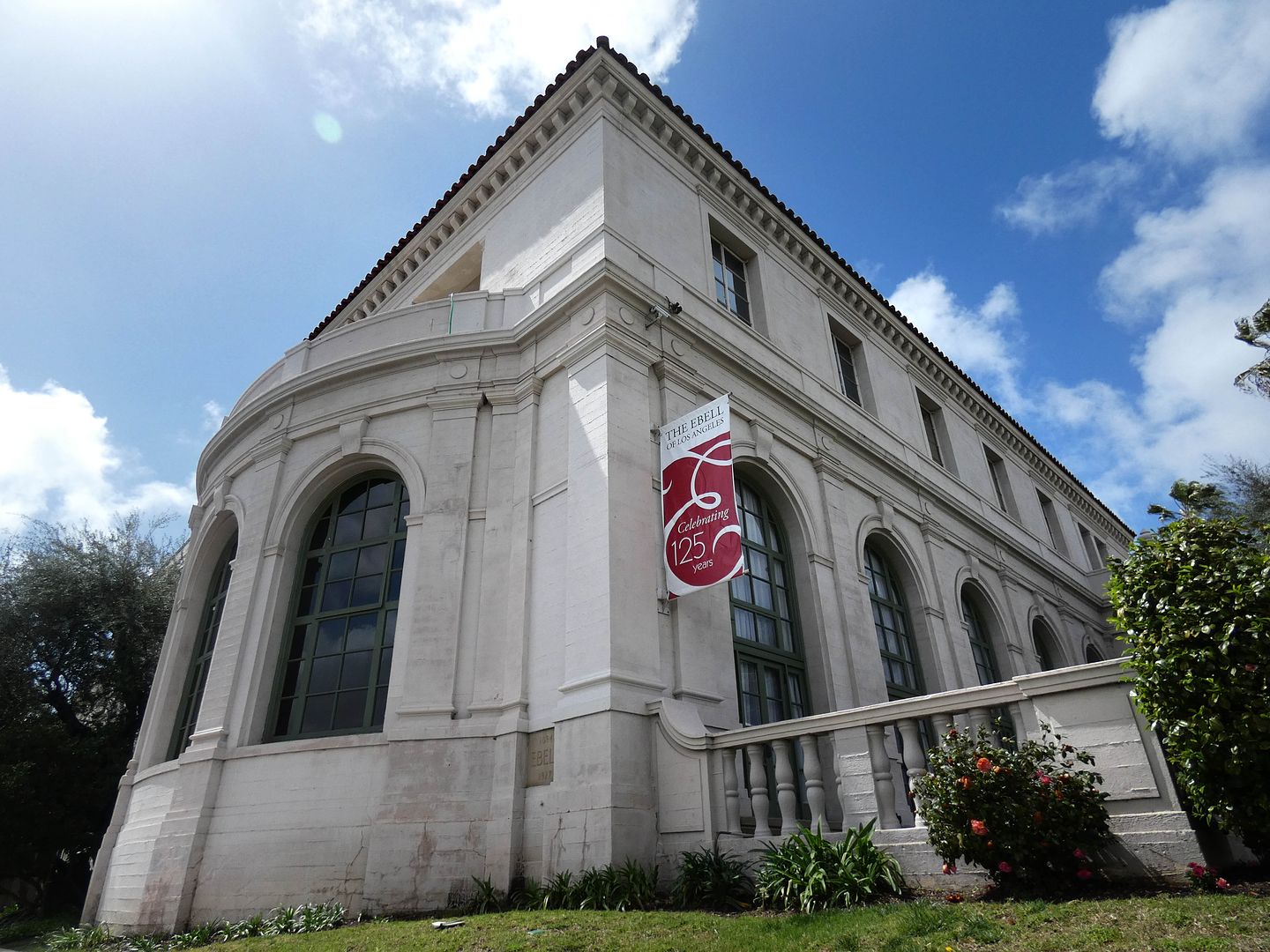
Now, in honor of Women's History Month, it feels like a good time to share my photos and what I learned about it.
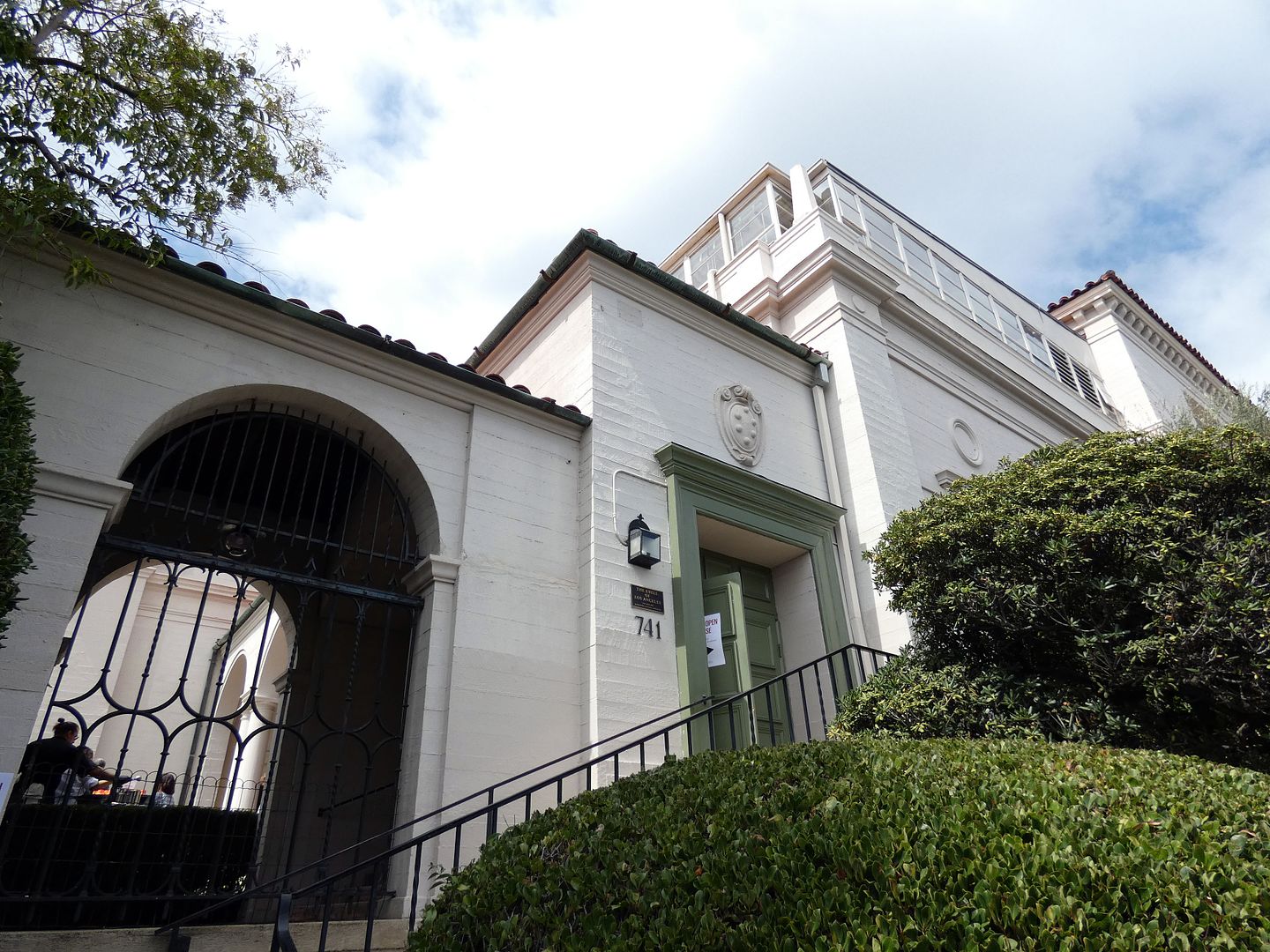
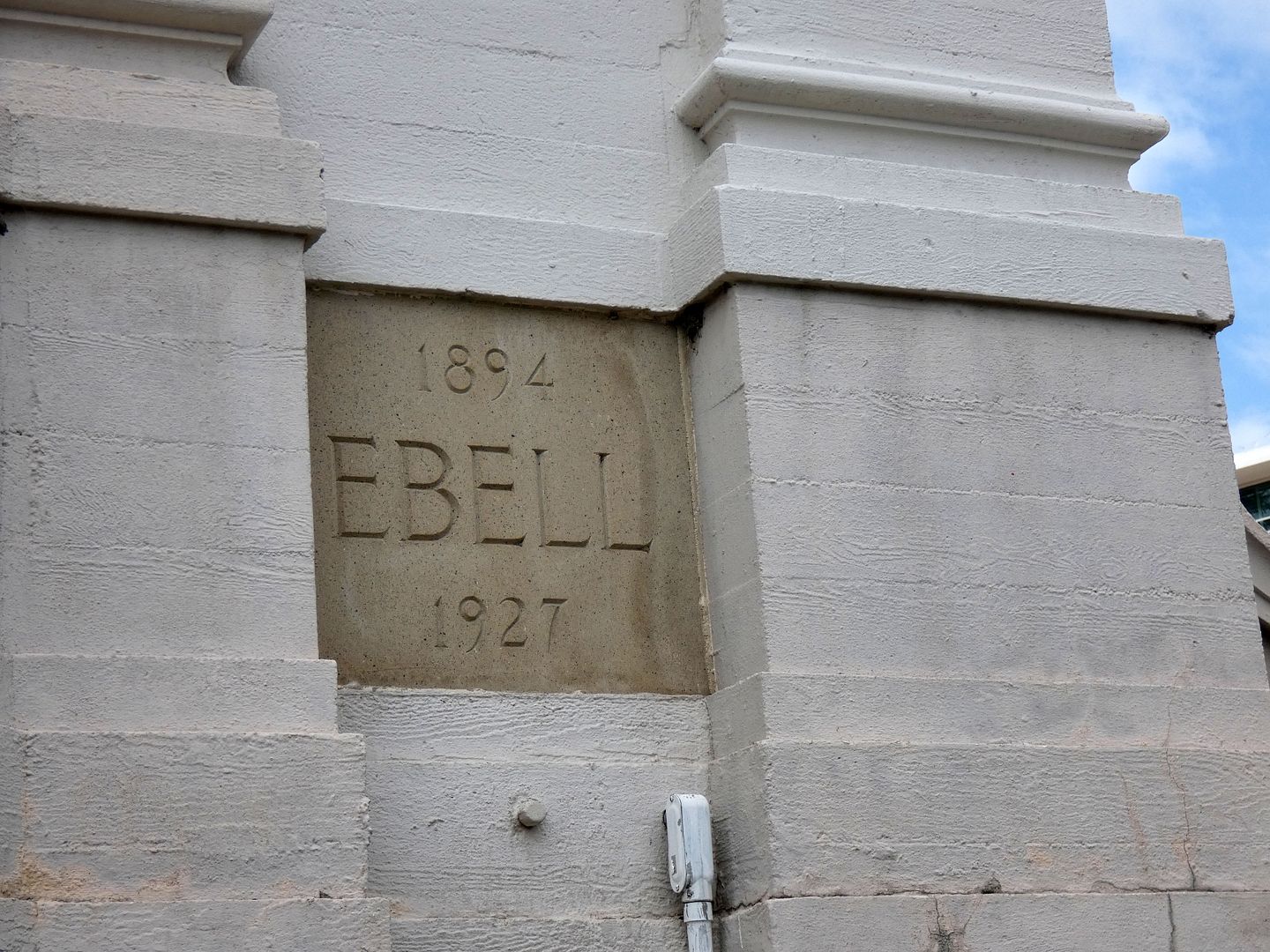
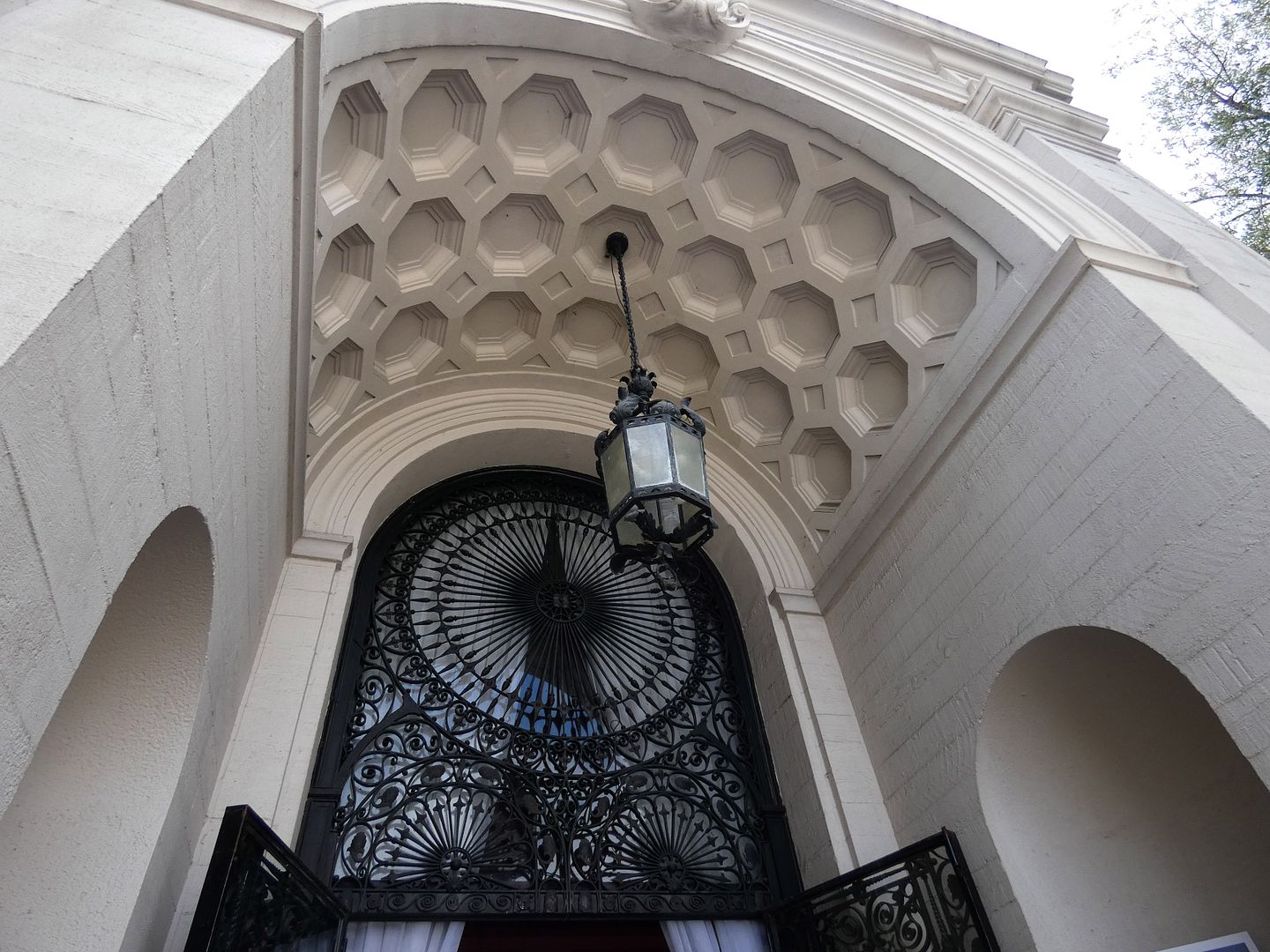 Wrought iron grille, designed by John William Chard, added in 1928
Wrought iron grille, designed by John William Chard, added in 1928
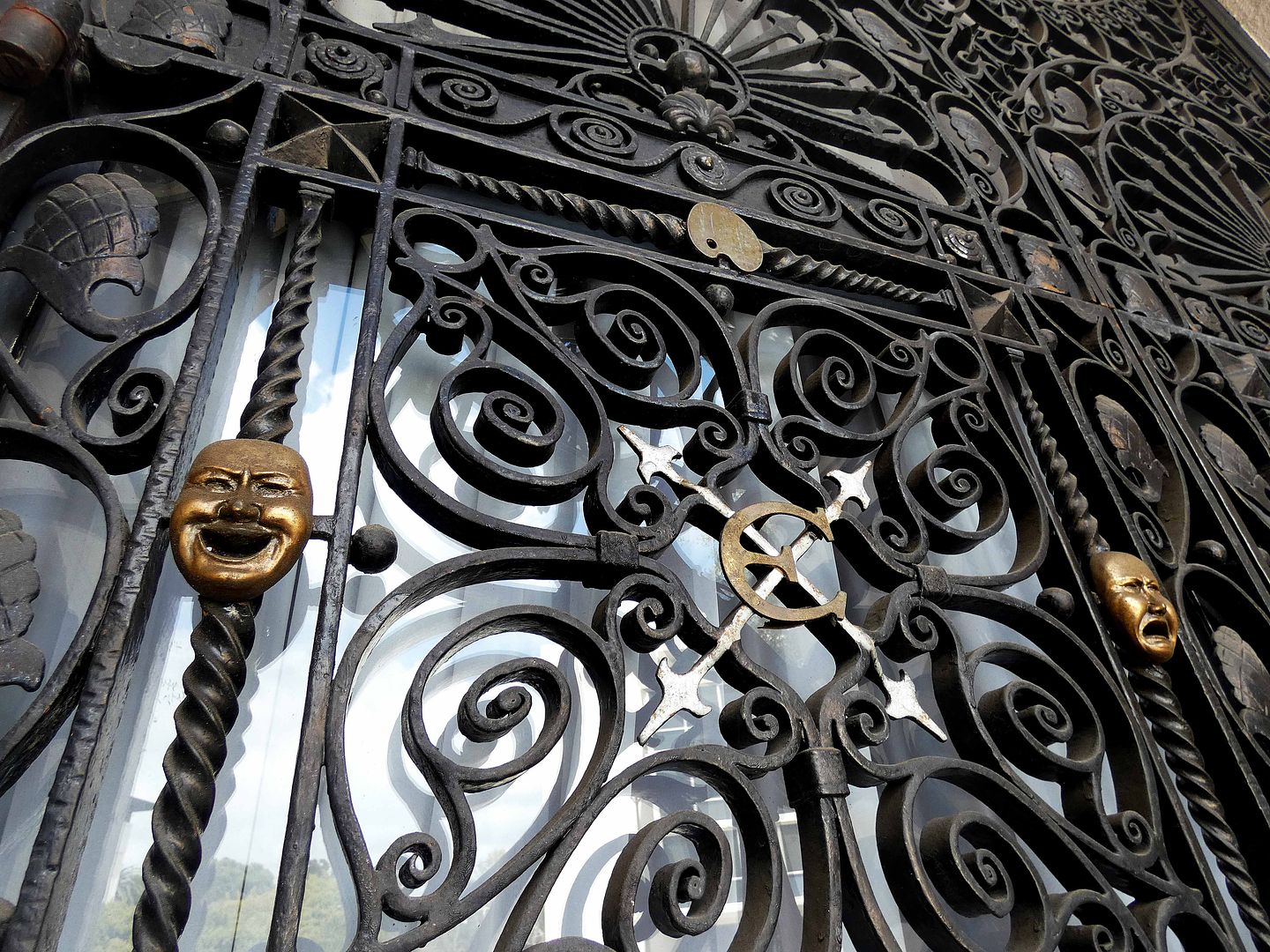
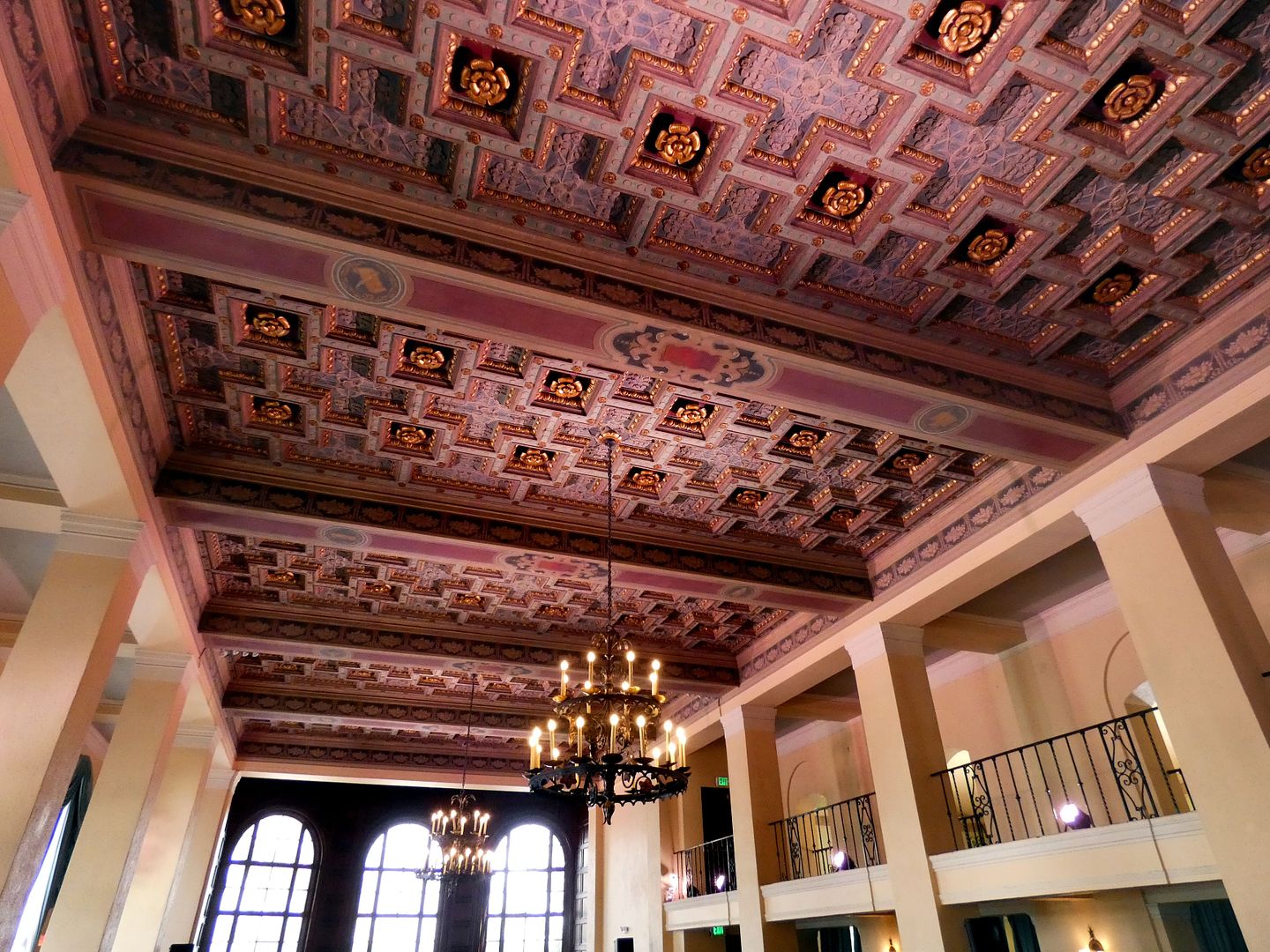
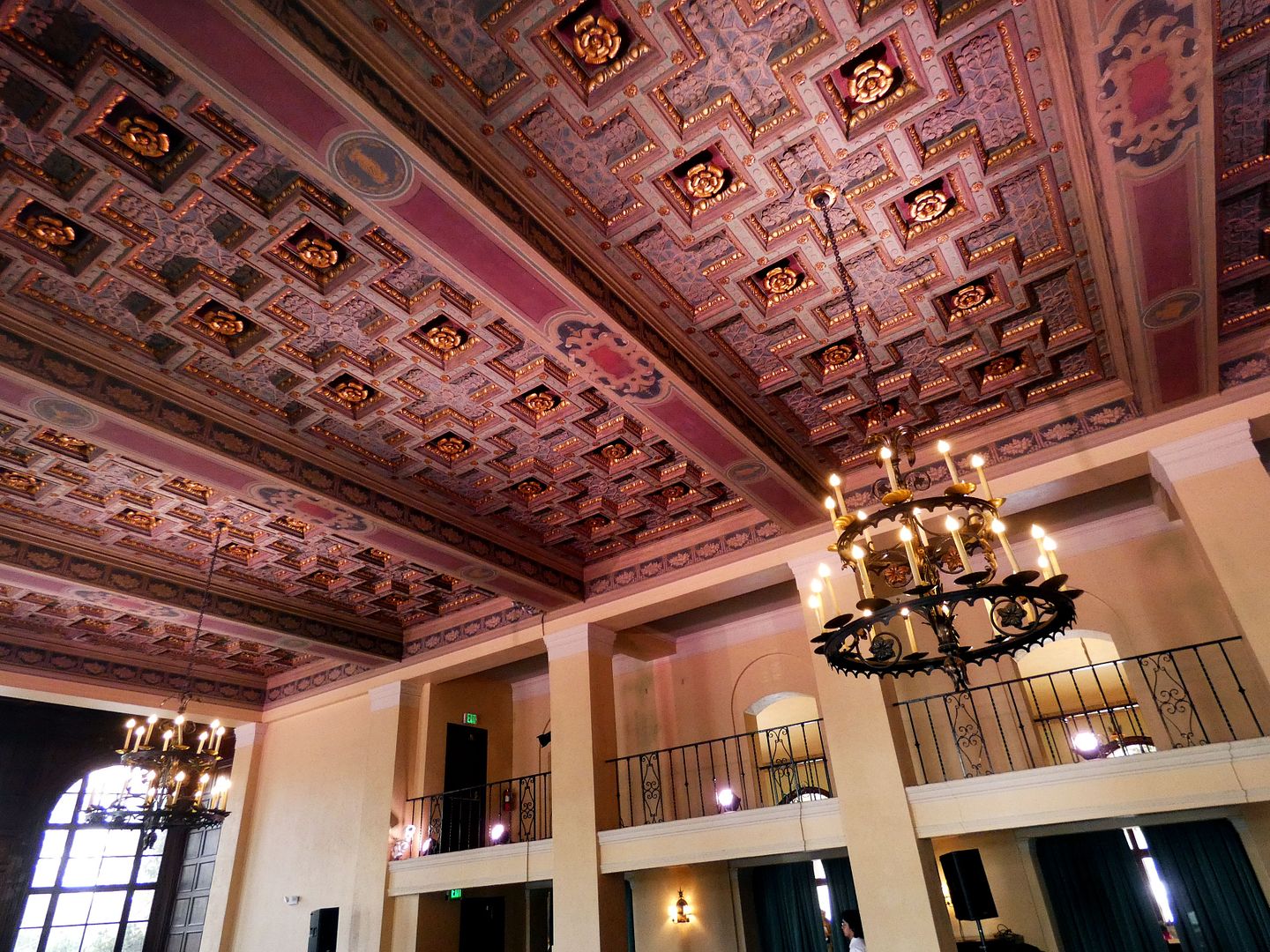
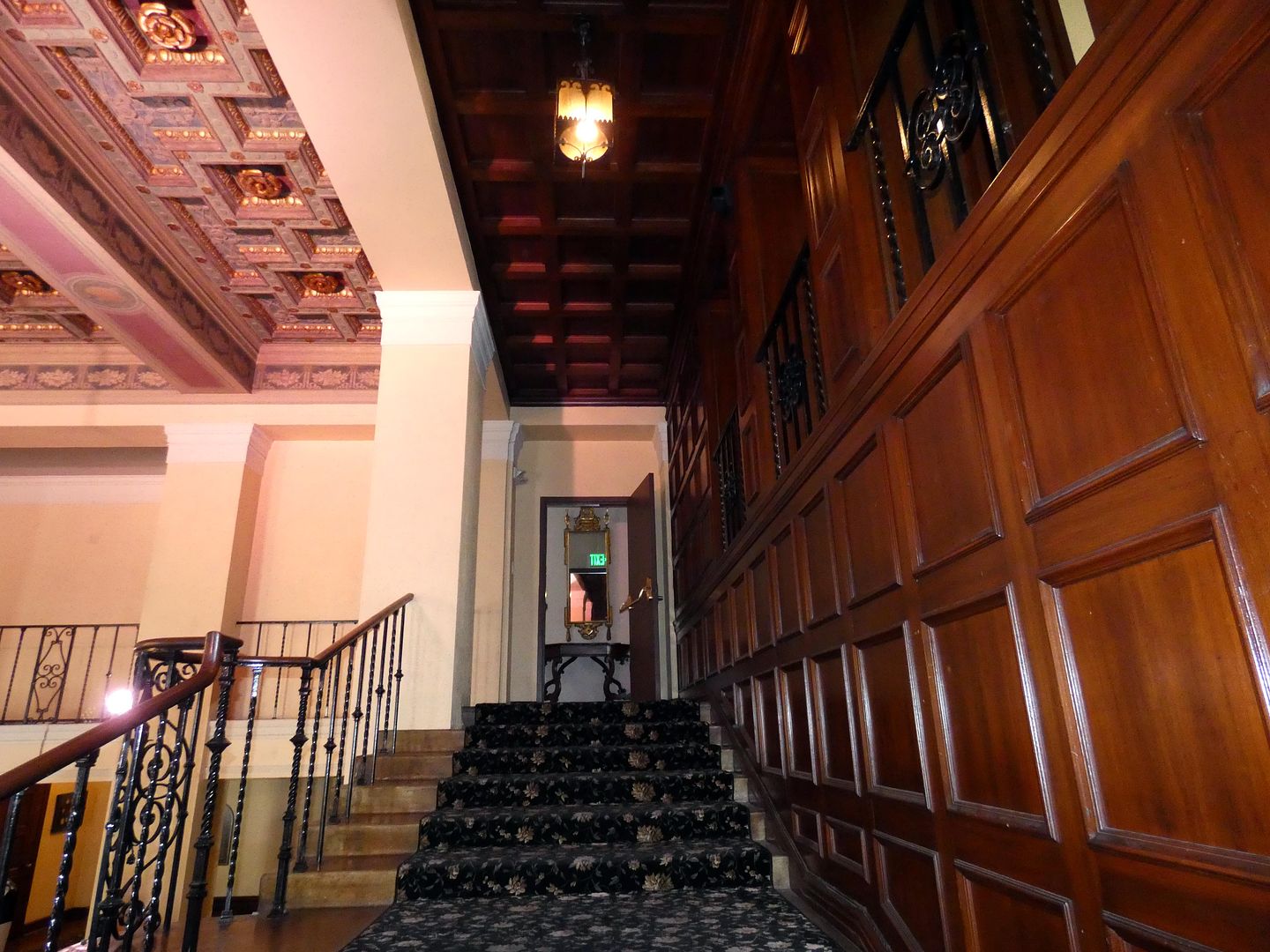

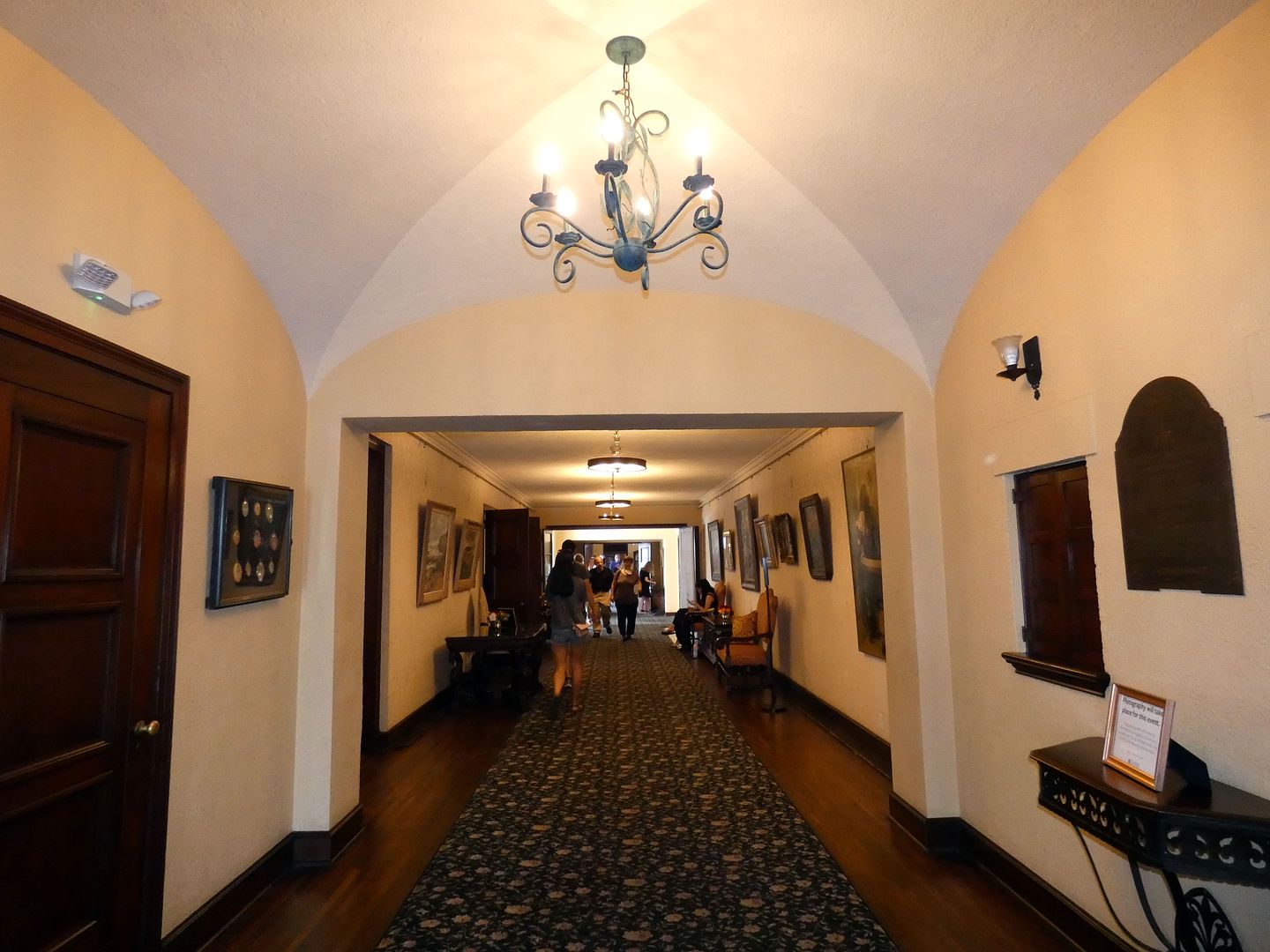

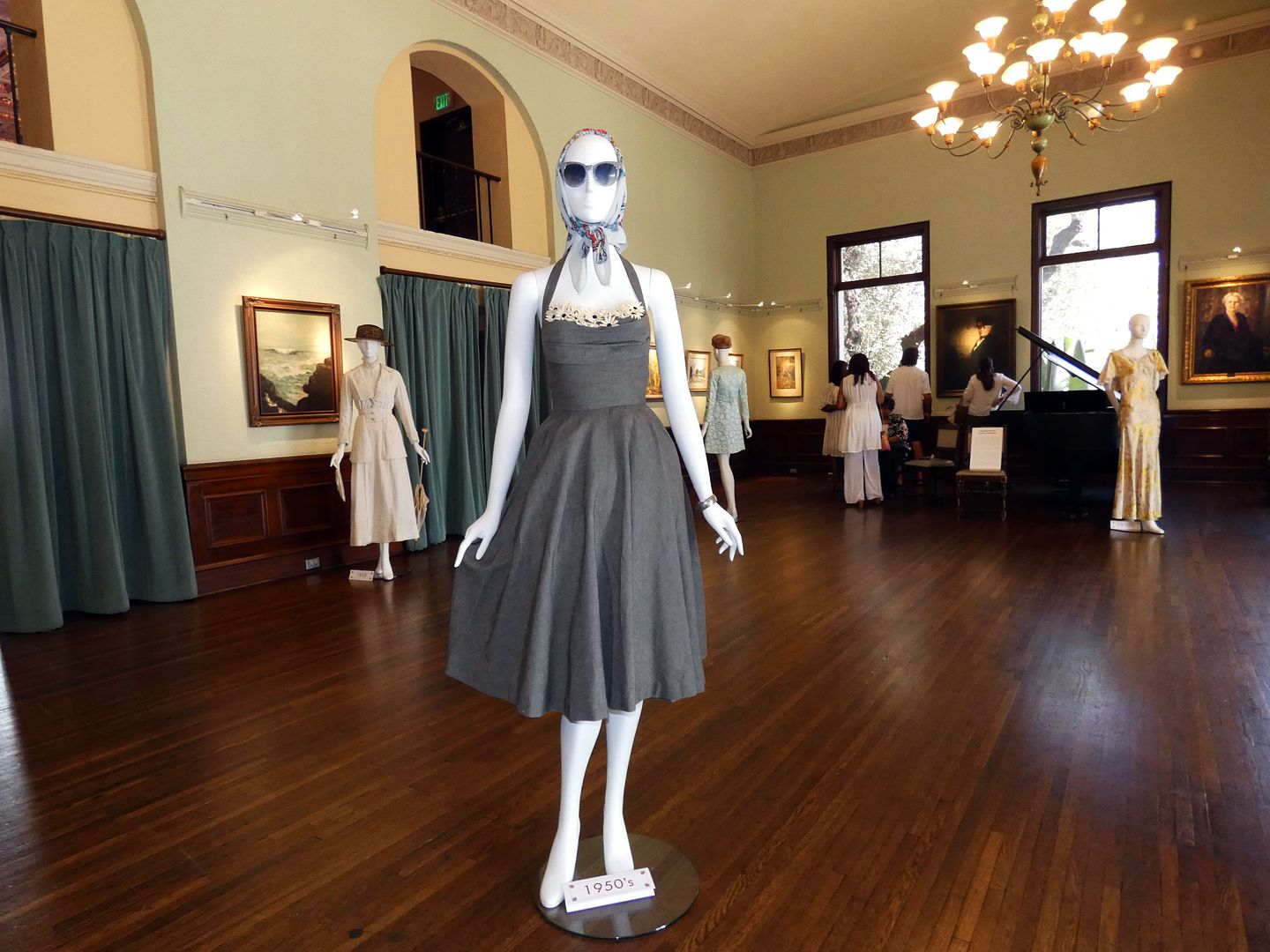

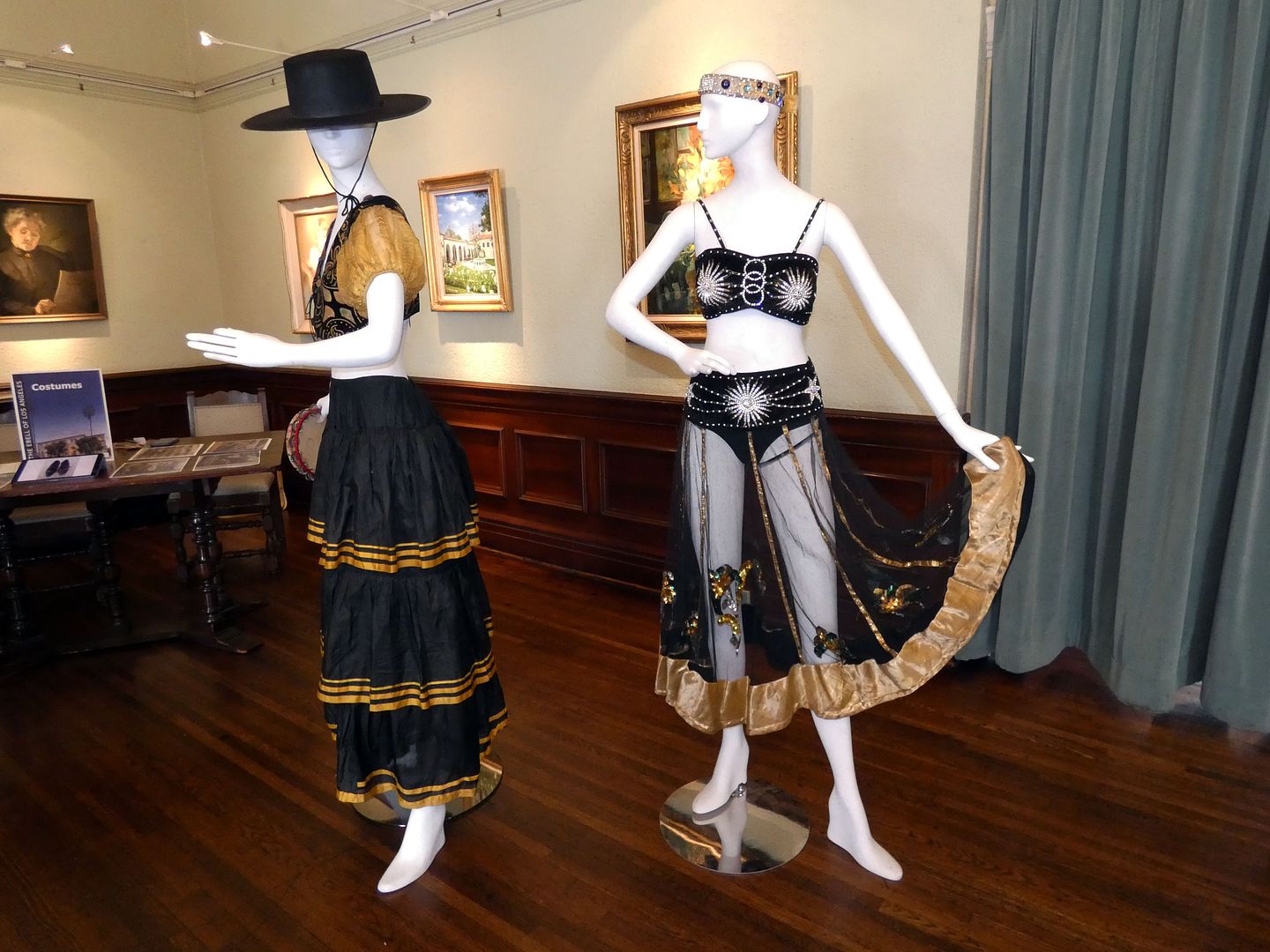
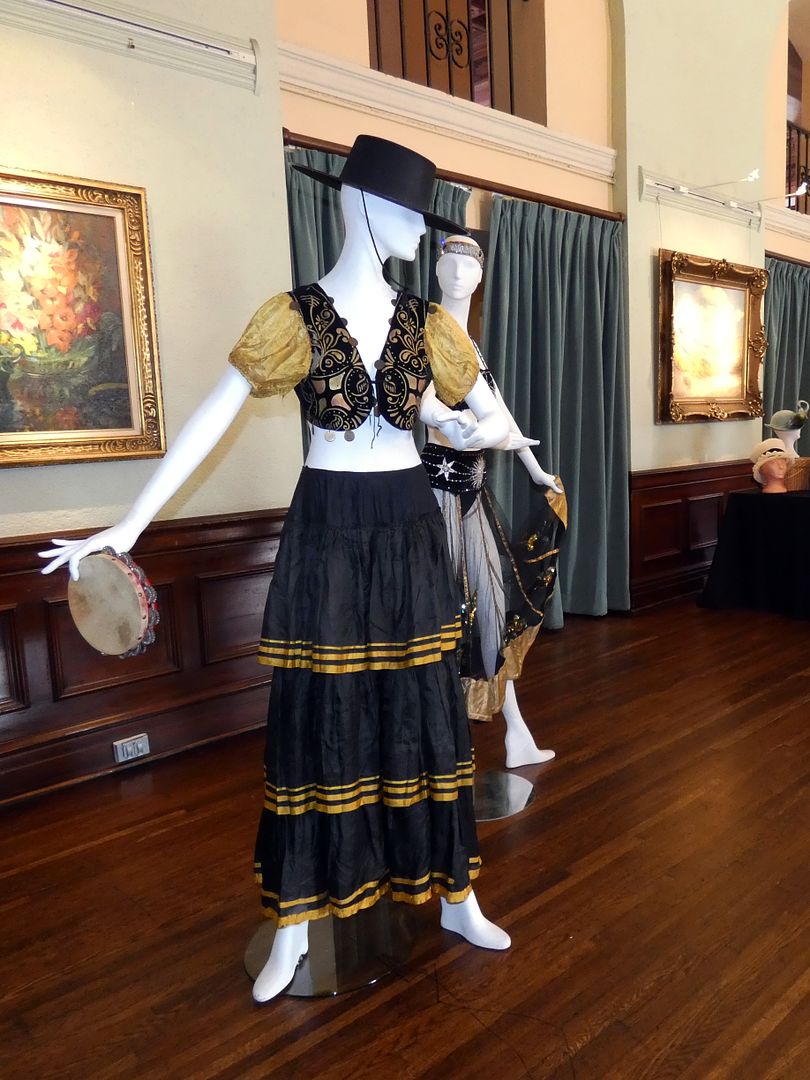
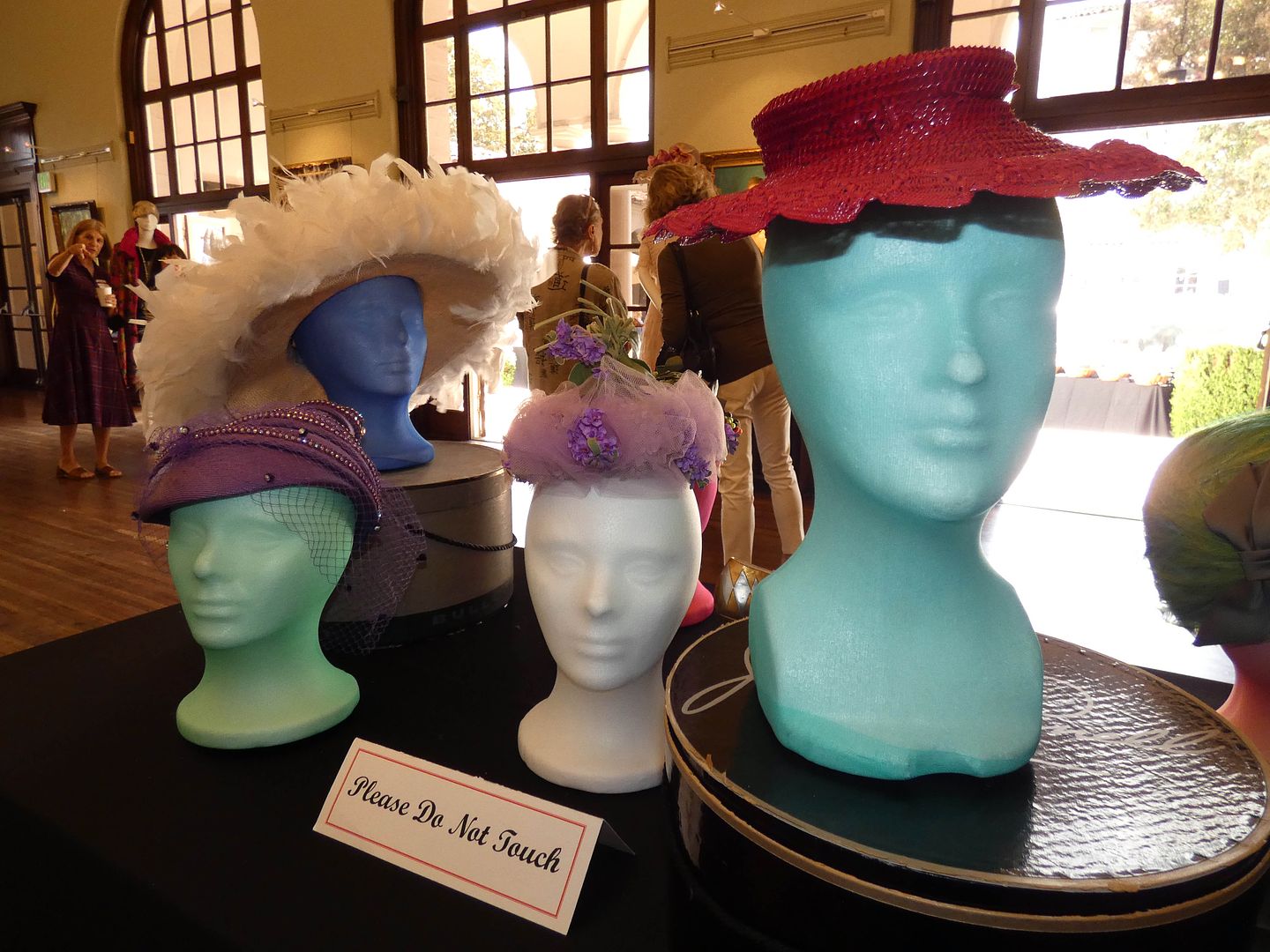

As someone who never joined a sorority in college, I wasn't sure how I felt about any single-gender membership policy.

But if for nothing else, the building itself—constructed in 1927 and designed in the Italian Renaissance style by architect Sumner P. Hunt—seemed worth a visit.
 Wrought iron grille, designed by John William Chard, added in 1928
Wrought iron grille, designed by John William Chard, added in 1928I'd missed several years' worth of fall open houses at The Ebell of Los Angeles' headquarters on Wilshire Boulevard—but as of late, I've gotten tired of places lingering on my list for too long.

So, I finally made it a priority to actually walk through the front door rather than simply admiring it from the street.

The women's club was actually founded in 1894 by Harriet Williams Russell Strong to continue the principles of 19th-century women's education pioneer Dr. Adrian Ebell—a man, no less.

Since then, no matter which clubhouse it's been in—but especially this clubhouse—the Ebell Club has situated itself at the epicenter of culture (arts, literature, even science) for women. (It's also been a filming location for movies and TV, like Forrest Gump, The Curious Case of Benjamin Button, the bank scene in Ghost, and more.)

And throughout the Wilshire Ebell's three floors and 75,000 square feet, you can still find a variety of literary readings, musical performances, lectures, etc.

It's all contributed to the officially-designated historic status of The Ebell, from the city level all the way to the National Register—the coffered, gold-leafed ceilings of the Reception Hall/Lounge, the carved wooden staircase, the arched doorways and windows, the pillars, all of it.

And it's survived not only the stock market crash of 1929—and the ensuing Great Depression—but also several earthquakes (ones that have toppled lesser edifices).

In fact, the Ebell continued to grow during those scary economic times—including adding the two-story Art Salon in 1929. (Look familiar? It stood in for the auction house in the 2011 film The Artist.)

During the annual open houses, the salon is where you can find select pieces from the club's historic costume collection...

...many of which were worn by members performing in pageants and theatrical productions and attending historically-themed parties and more.

They say their collection contains more than 1000 pieces from the 1880s to the 1990s—shoes, hats, shawls, parasols, you name it.

Some of them were professionally made by costume designers...

...while others were donated by members. 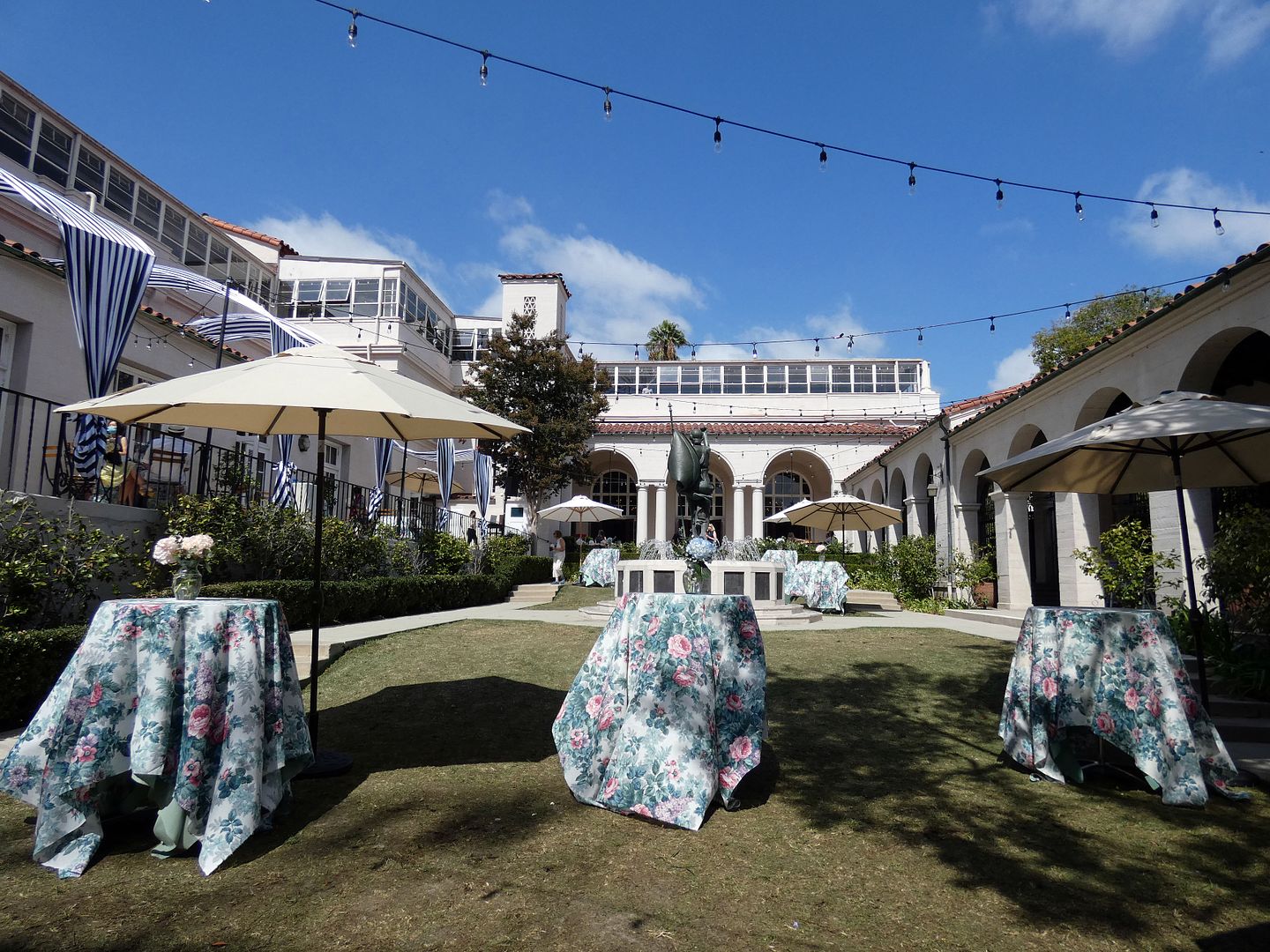
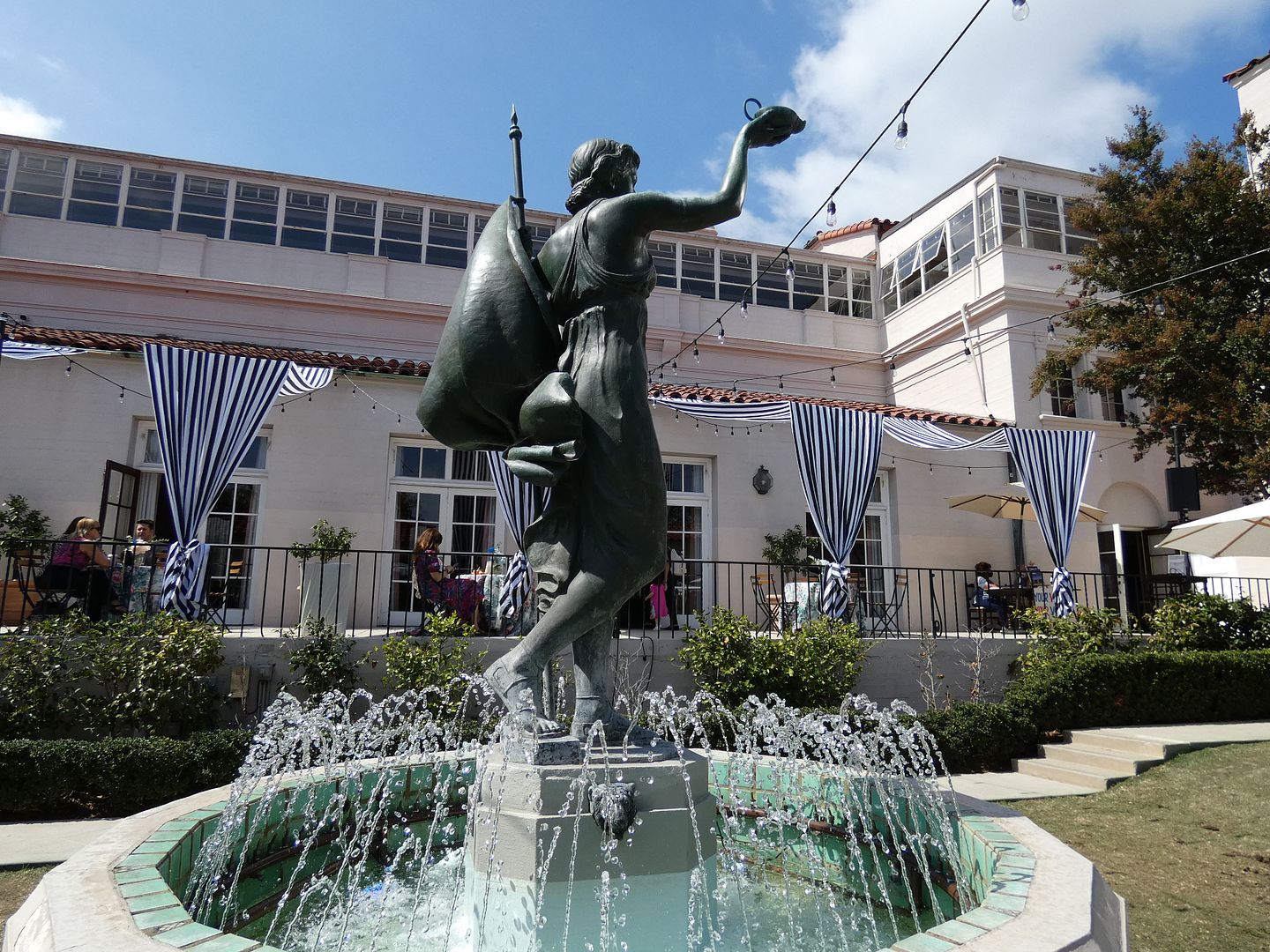
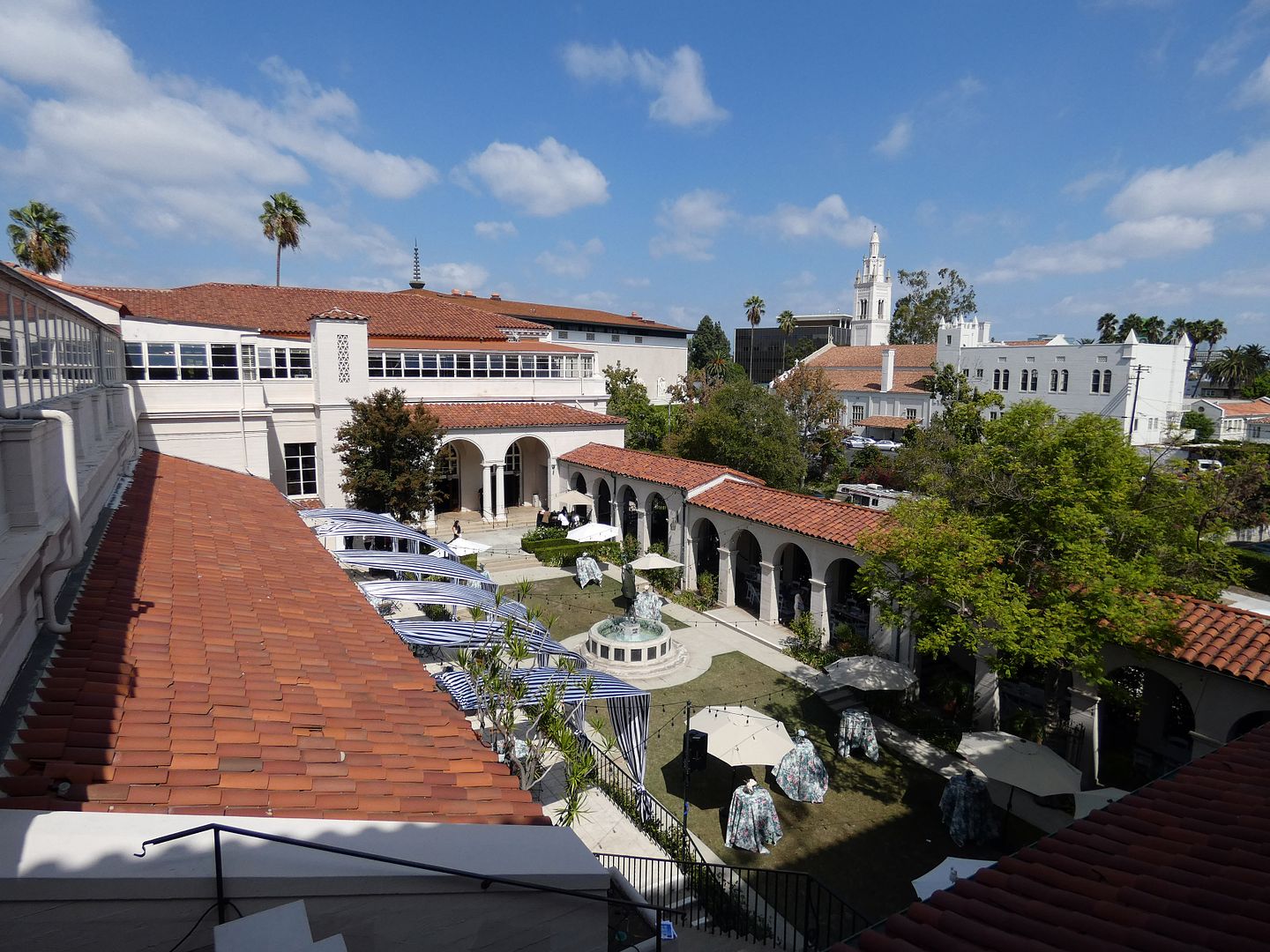
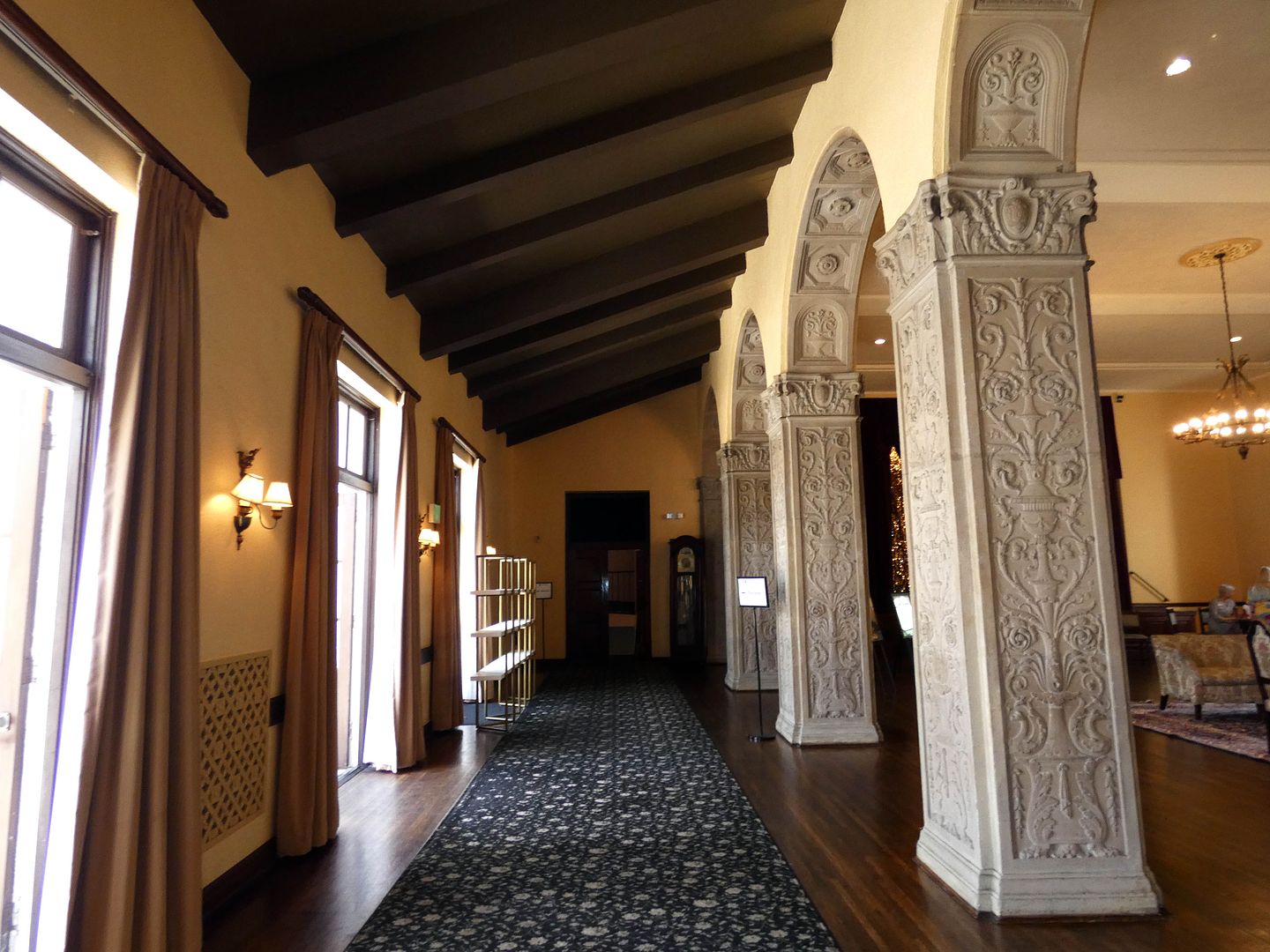
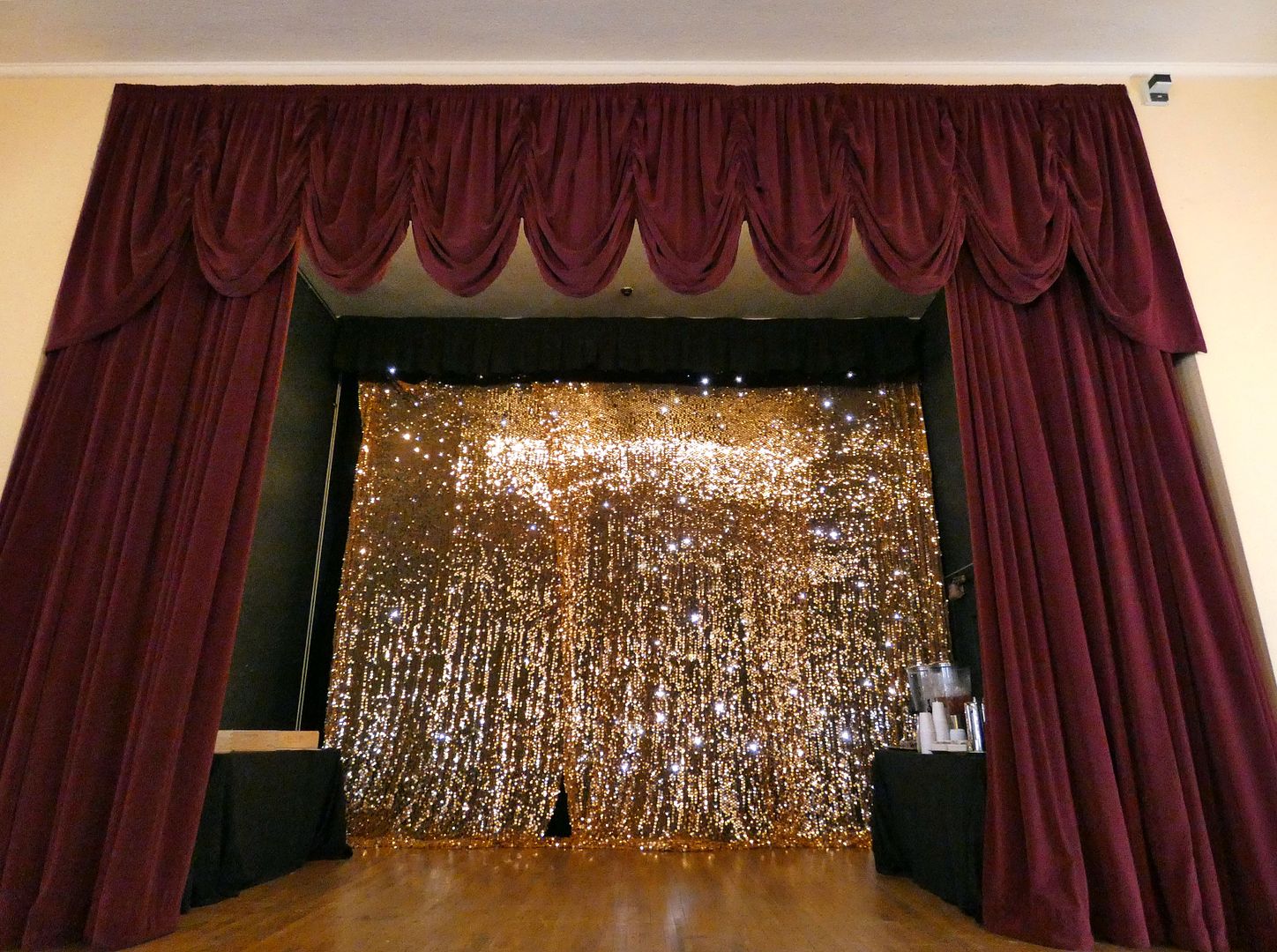
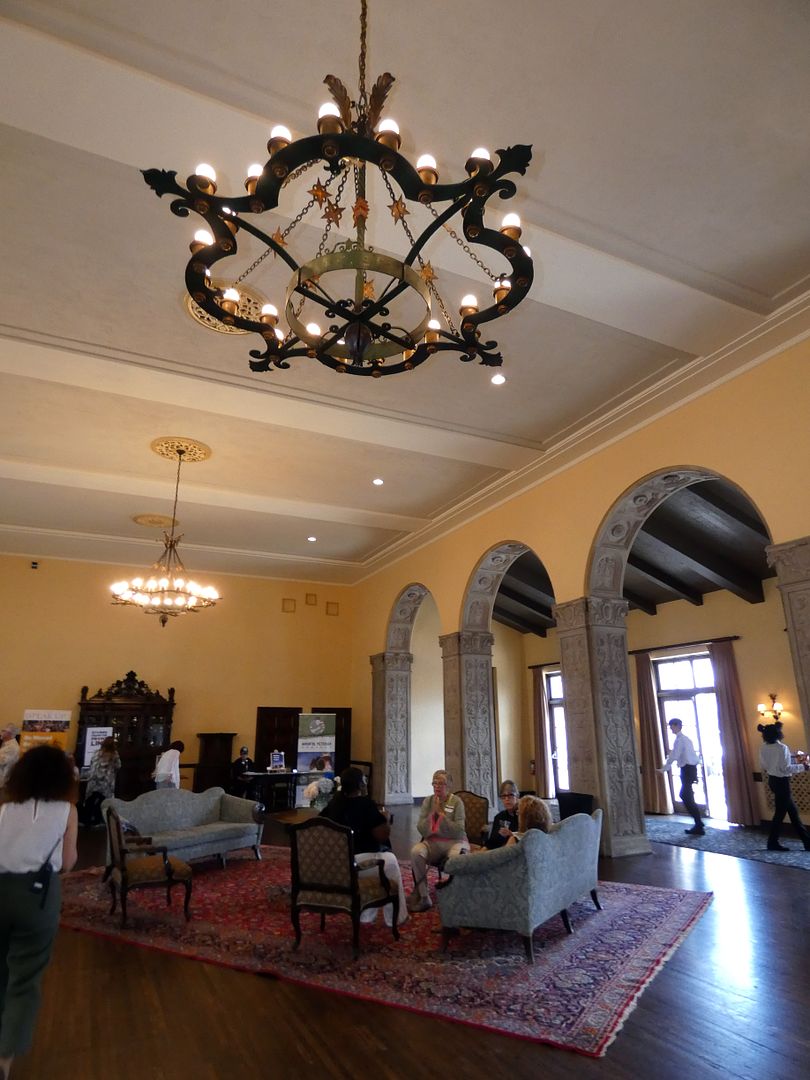
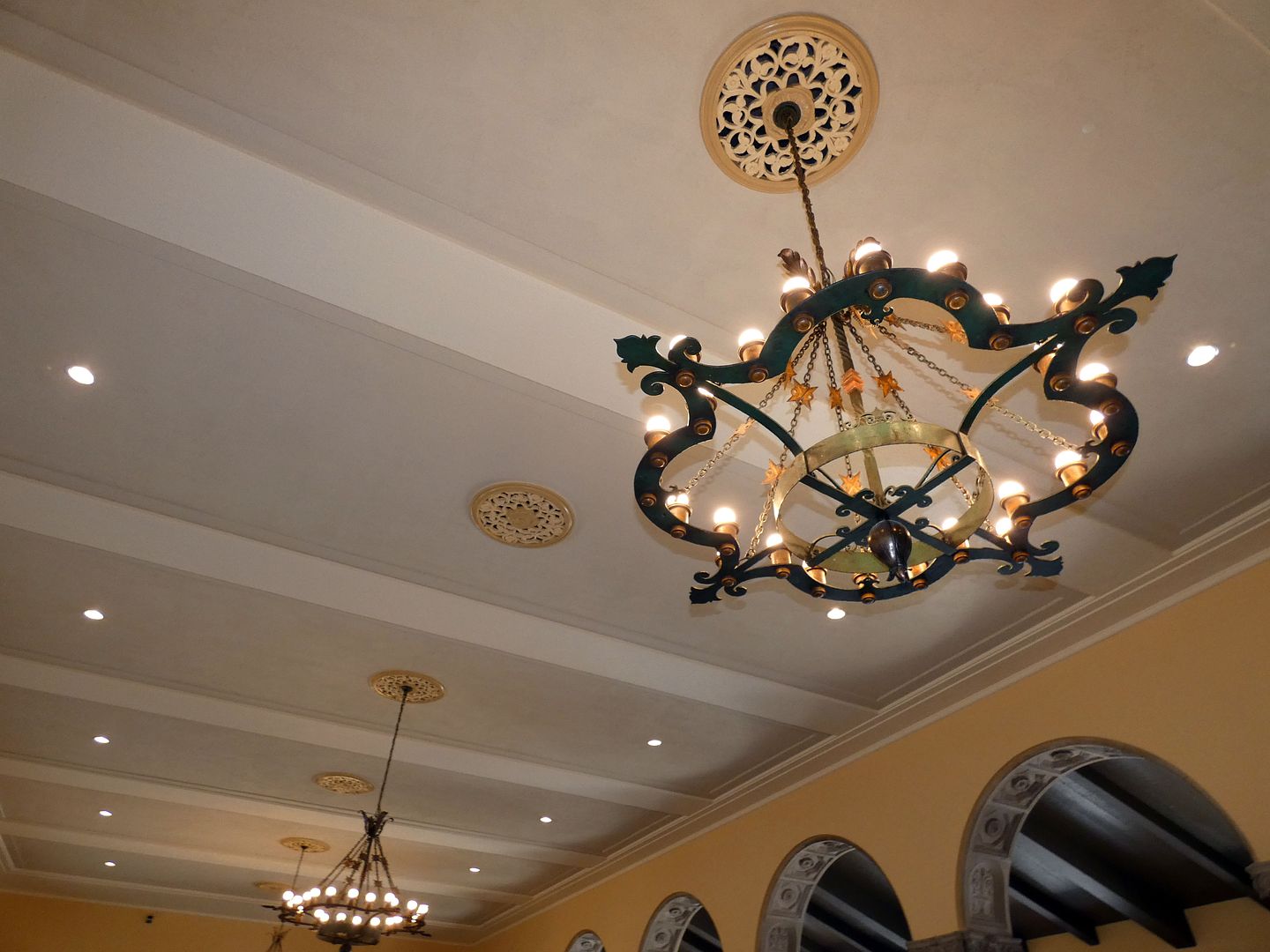

Outside of the salon is the courtyard garden, whose landscaping was originally designed by the duo of
Florence Yoch and Lucille Council. The Ebell reportedly insisted on hiring women whenever possible.

At the center of the courtyard is The Fountain of Honor, erected in remembrance of those men the members lost in WWI. Although sculpted by Henry Lion, it was designed by Julia Bracken Wendt and cast in bronze by the California Art Bronze Foundry.

I climbed up a set of stairs off the courtyard to get an overhead view of the Dining Room Terrace (left) and Loggia (right, the hospital in The Artist). Behind me was the Wilshire Ebell Theatre—but I'll save that one for a future post.

Up on the third floor, the Dining Room's arched colonnade overlooks the garden...

...and past the poured-concrete columns, a small stage hosts a number of performances.

Projection room apertures can be seen on the opposite wall, positioned high towards the ceiling. (This room was also used in the film The Artist.)

Although it's been been repainted many times, the dining room has been returned to a close-to-original color scheme—light and dark creams, taupe, and tan.
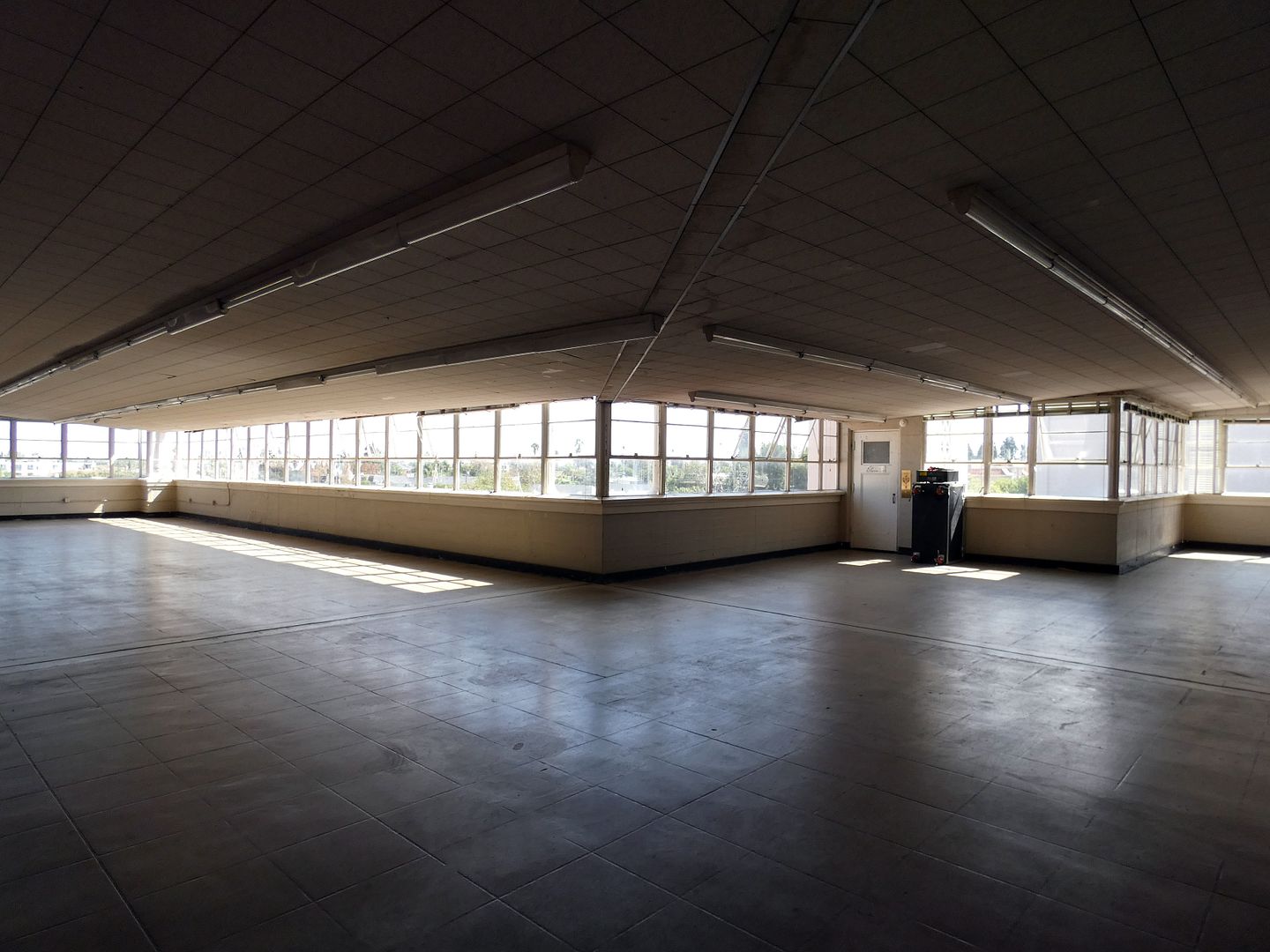
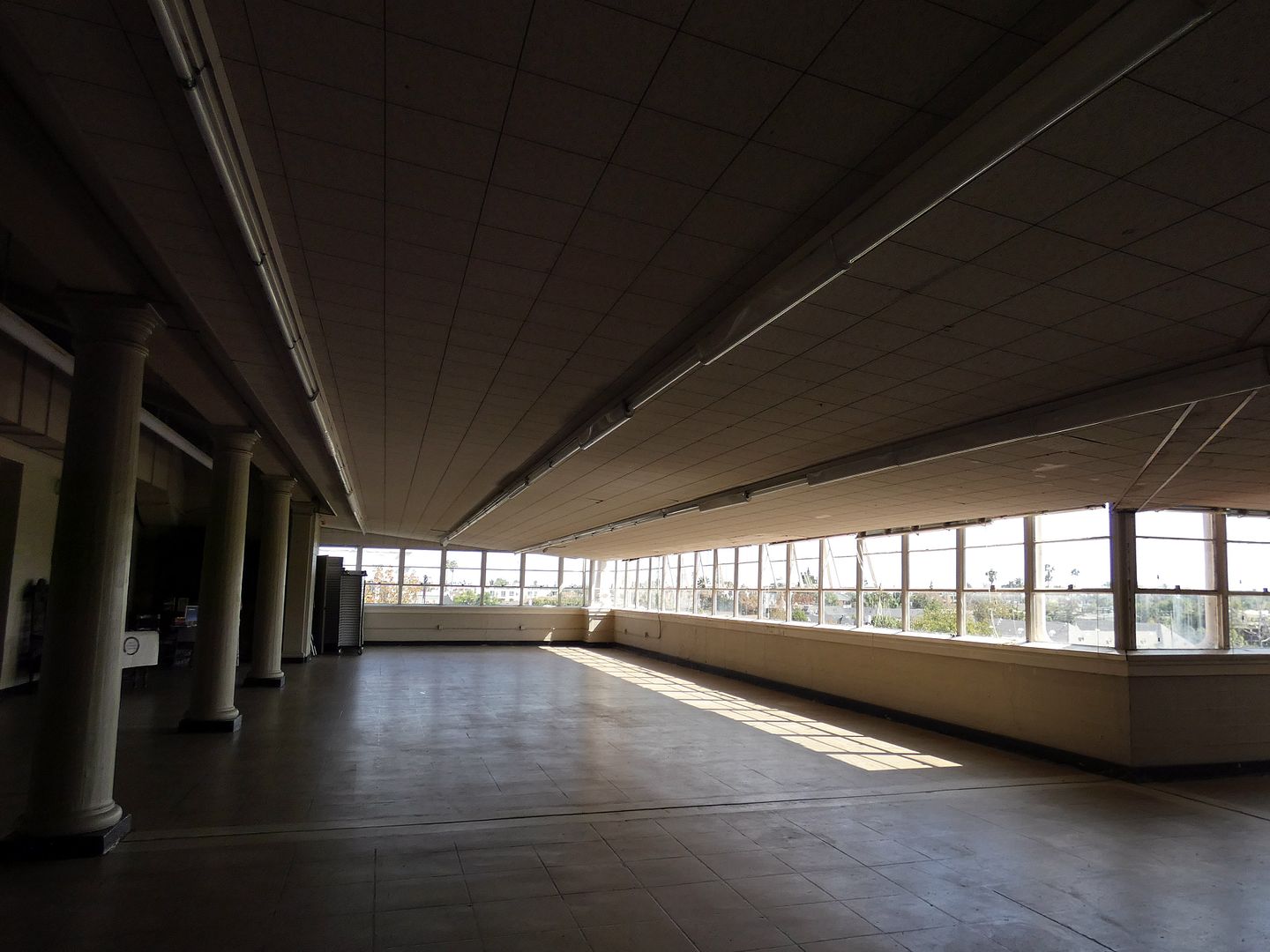
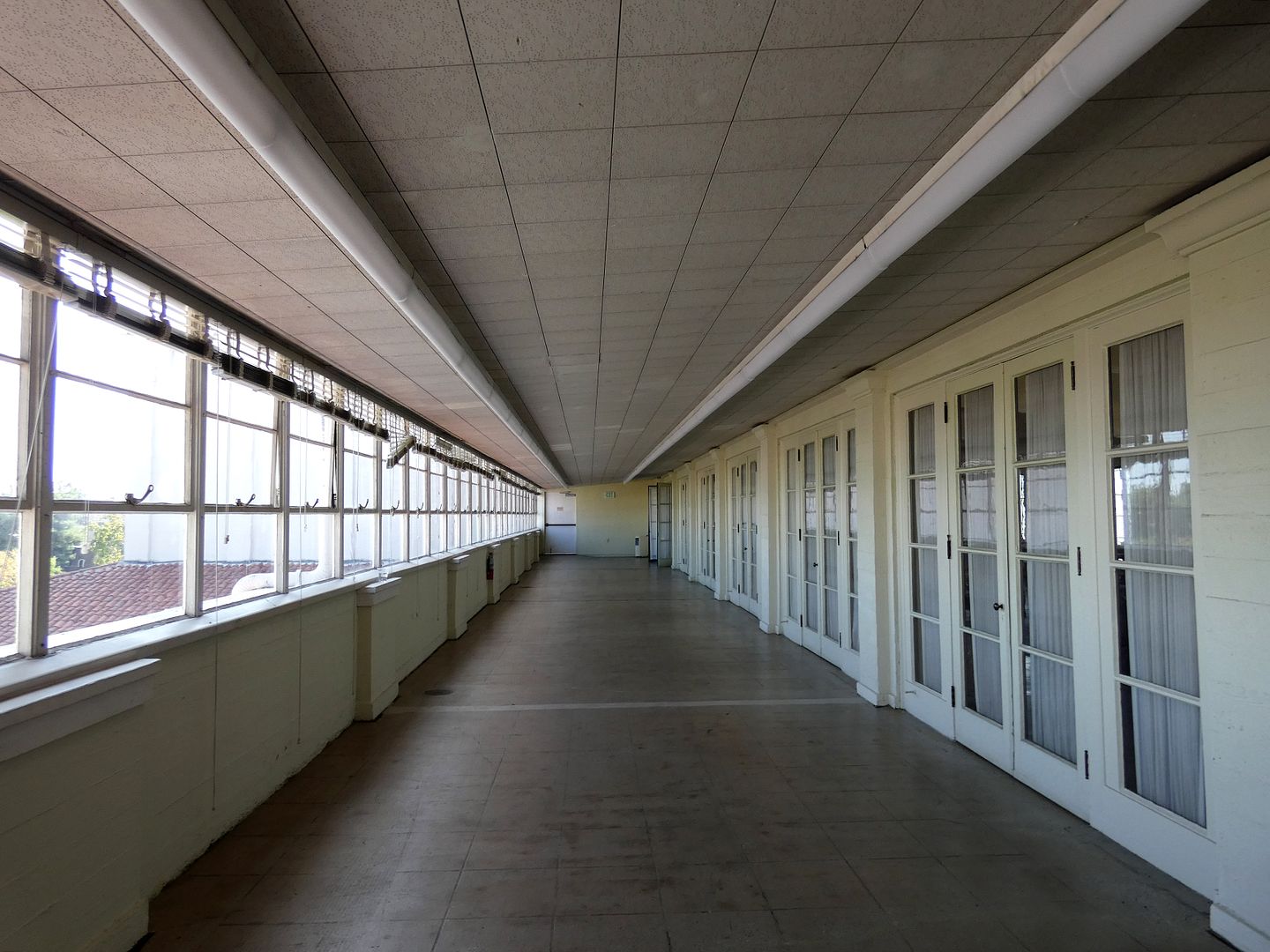
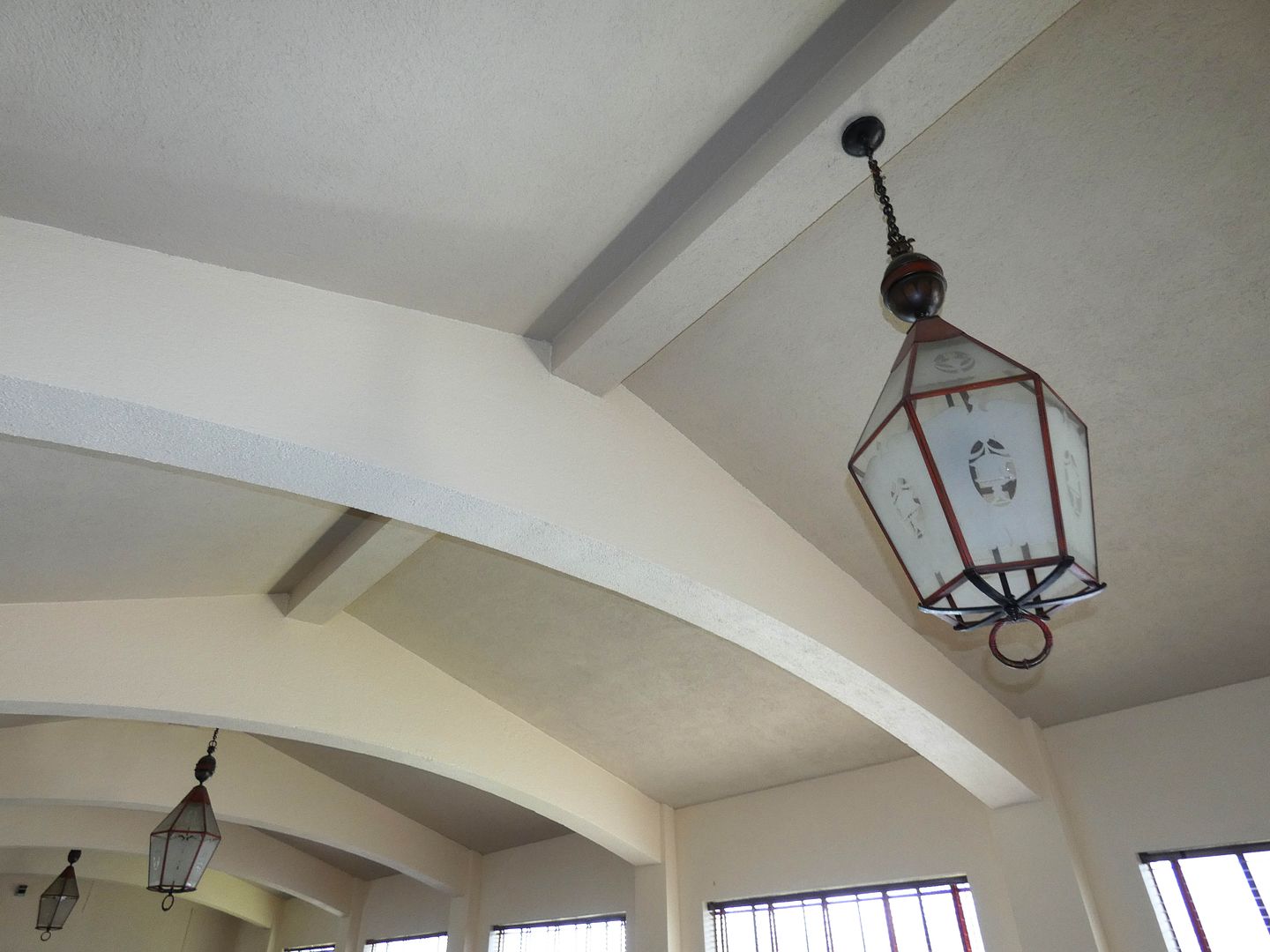
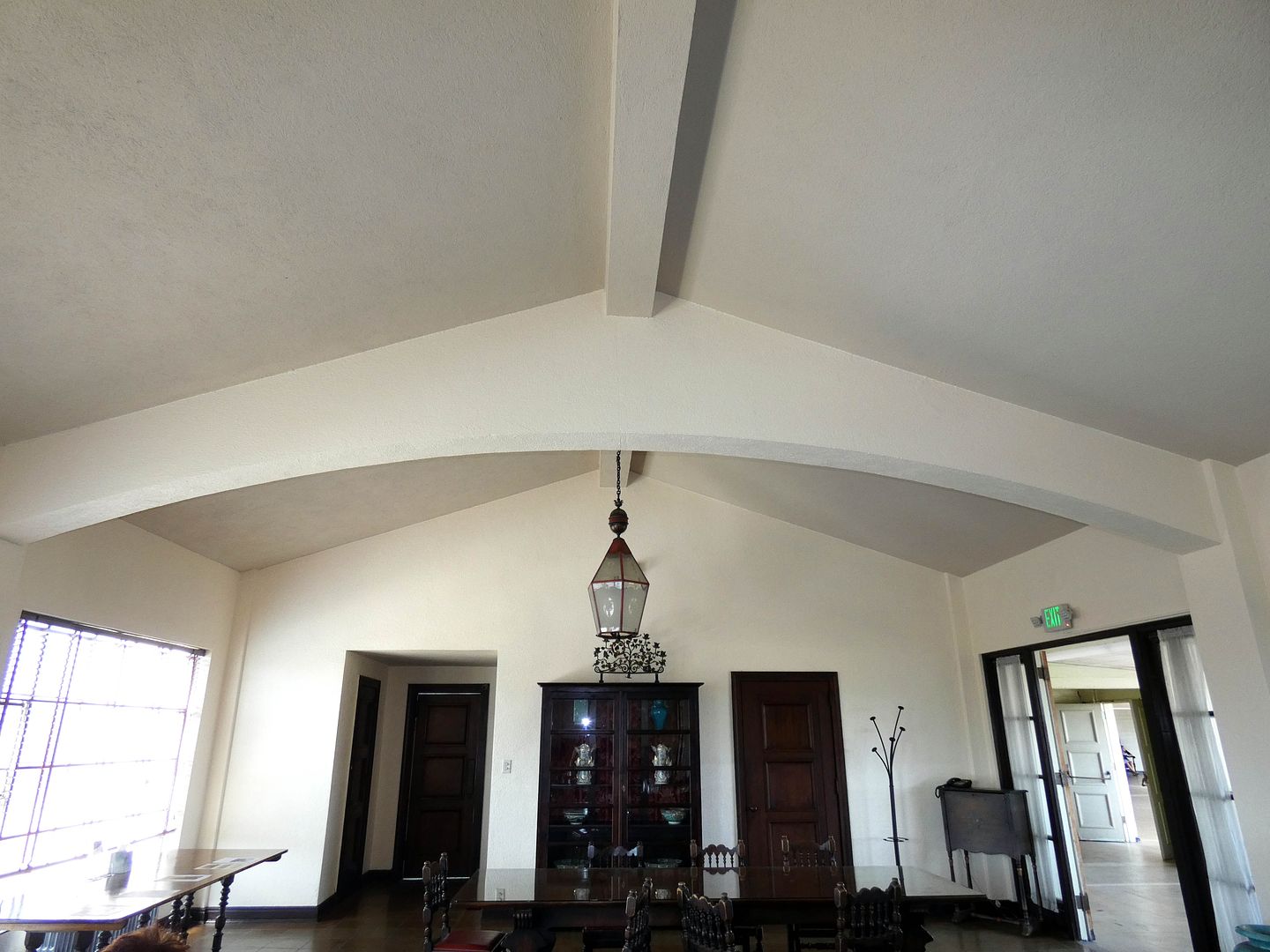
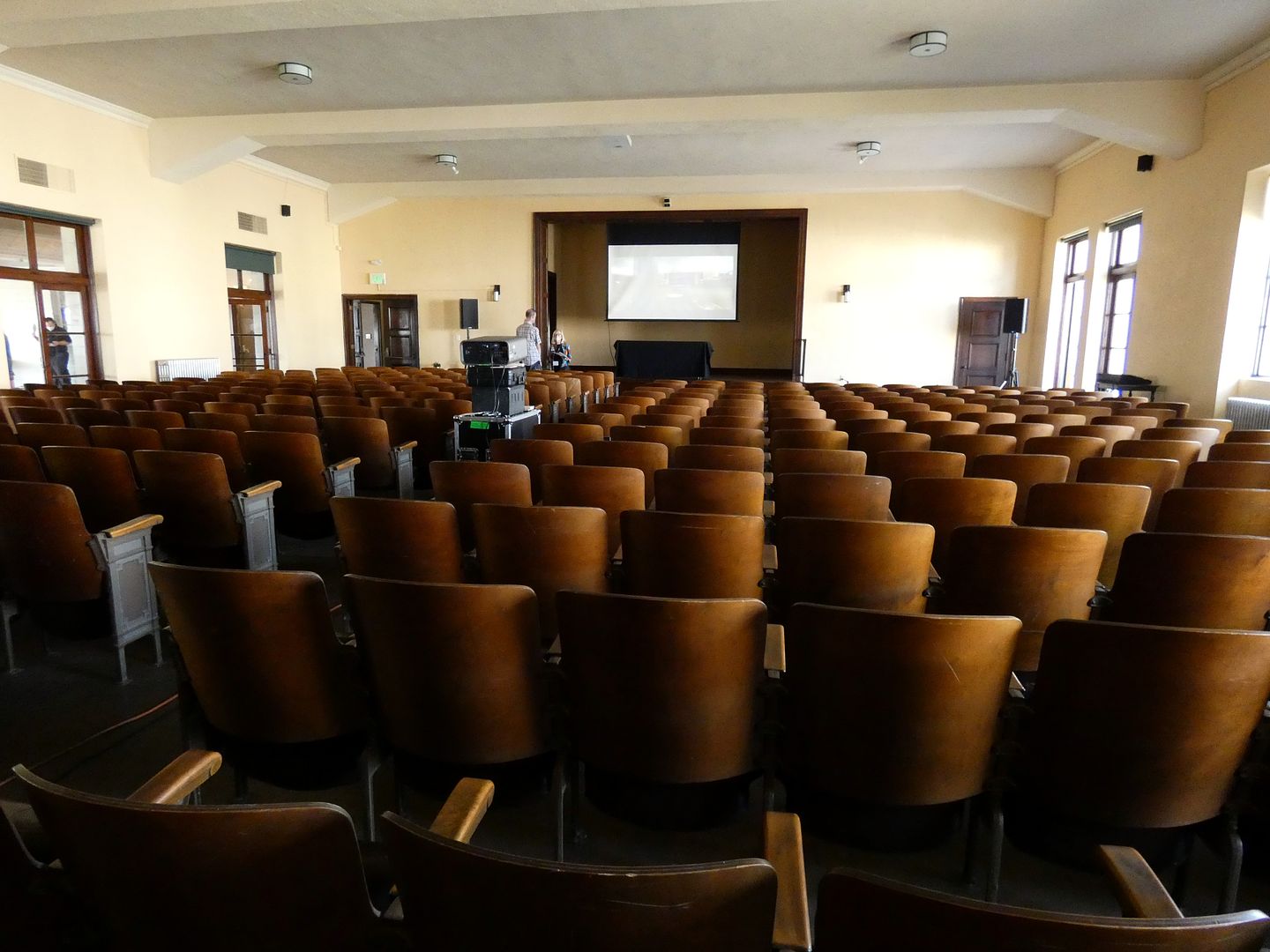
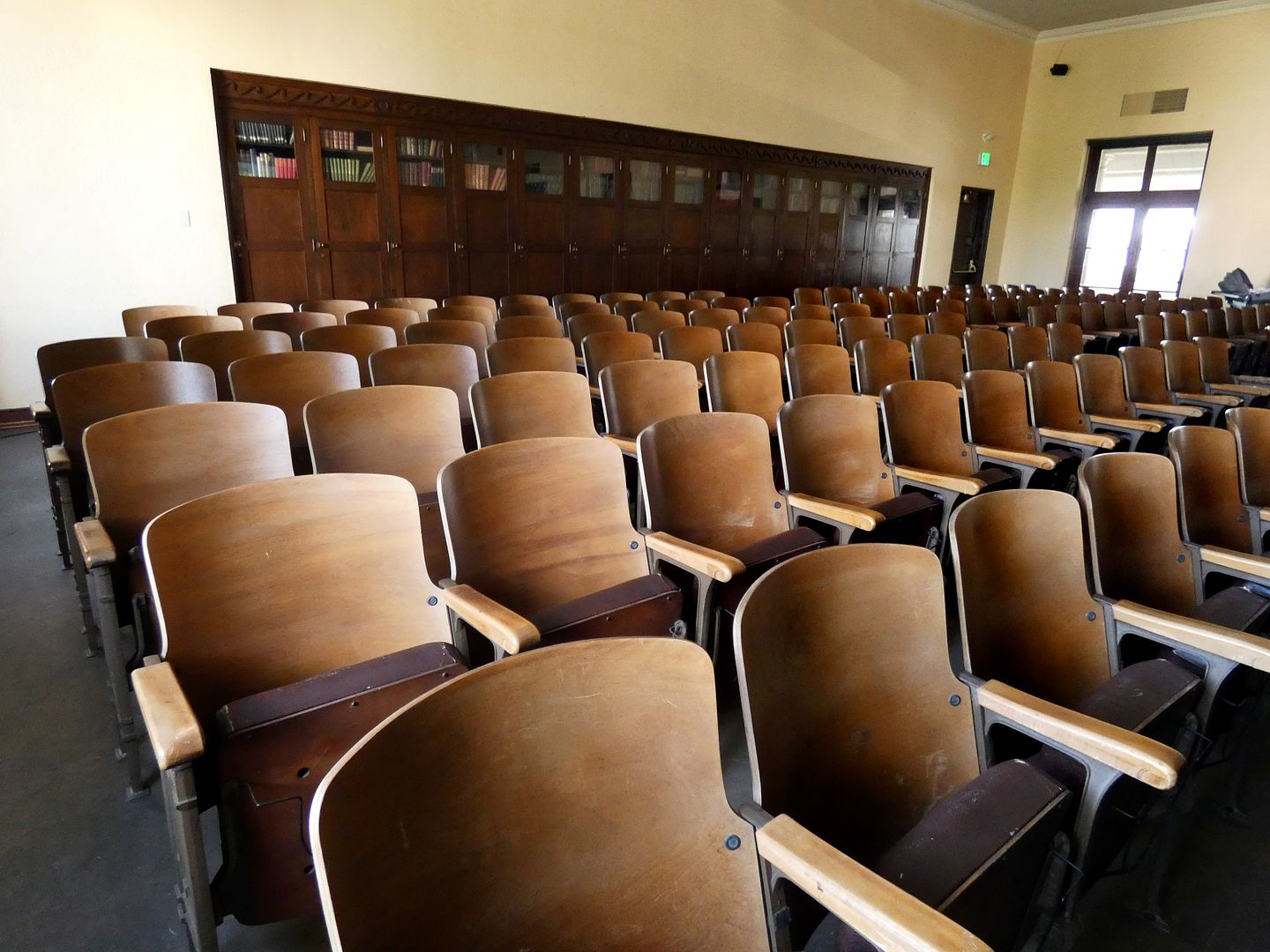

Today's third floor terrace (also in The Artist and in Forrest Gump) used to be an outdoor roof garden that was enclosed in the late 1930s.

Its row of pillars kind of gives away its former al fresco nature.

The adjacent Solarium/Sun Room was to be a part of that same outdoor roof garden...

...but the plans were changed during construction to build a roof over it.

A member docent told us that this is where the Ebell Chorale (which has been performing for over 90 years) rehearses.

Also on the third floor is the clubhouse's preeminent lecture hall—the Fine Arts Auditorium, a 300-seater formerly known as Department Room "A."

It's here where Leonardo DiCaprio's character recruits stewardesses before he leaves the country in Catch Me If You Can.
Amazingly, despite the Depression and the World Wars, the Ebell of Los Angeles managed to raise enough money to pay off the clubhouse mortgage by 1947—and in May 1948, the club hosted a "mortgage-burning party," according to the nomination form submitted to the National Register of Historic Places.
But the club had already made quite a bit of money in real estate by selling their prior clubhouse—and it raised money from its membership to purchase its furnishings and decorations, too (some of which were donated by members as well).
Stay tuned for a photo essay from the Wilshire Ebell Theatre, coming up next.
Related Posts:

No comments:
Post a Comment